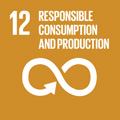- Docente: Massimo Fornasari
- Credits: 8
- SSD: SECS-P/12
- Language: Italian
- Teaching Mode: In-person learning (entirely or partially)
- Campus: Forli
- Corso: First cycle degree programme (L) in Economics and business (cod. 9202)
-
from Sep 16, 2024 to Dec 05, 2024
Learning outcomes
The aim of the course is to provide students with adequate knowledge of the main factors and stages of European and Italian economic development The course is divided in two sections: the first part outlines the key transformations of the European economy in a global perspective from the Middle Ages to the XXI century. The second part is devoted to the evolution of the Italian economy from the unification of the country to the present. At the end of the course the student is able to: - to grasp the complexity of historical processes, - to understand concepts, principles and issues drawn from the social and economic sciences, - to appreciate the constant interplay of economic systems, institutions, social and cultural dimensions.
Course contents
"We swim in the past like fish in the water." (E. Hobsbawm)
I) Institutions and economic development in European history
1. The historical background of the modern European economy
2. Market and technological innovations in the English industrial revolution
3. National paths to industrialization
4. The transformation of enterprise from the late XIX century to the early XX century
5. The state regulated economies of the XX century
6. From post-war reconstruction to the global economy
II) Institutions and economic development in modern Italy
1. The role of substitute factors in the Italian economic development
2. The characters of Italian industrialization and the issue of regional disequilibrium
3. State planning during the interwar period
4. Institutions and economic development in Republican Italy
Readings/Bibliography
Part I)
- M. Fornasari, Puzzle. Una storia del denaro, Torino, Giappichelli, 2024.
A selection of General Economic History texts will be indicated in class and pointed out in the slides; many good Course Notes can be found on the web, but these must be approved by the professor
Part II)
- P. Pecorari (a cura di), L’Italia economica. Tempi e fenomeni del cambiamento dall’Unita’ ad oggi, V Edizione, CEDAM, Padova, 2018.
Teaching methods
Slides provided by the teacher, included in the platform
https://virtuale.unibo.it
Assessment methods
It is expected that the exams, both partial and total, will be conducted in written form in an online mode (on the EOL platform).
The exam consists of a quiz made up of
- 20 questions (with 4 possible answers) and 2 "essays" related to the topics of the first module and
- 20 questions (with 4 possible answers) and 2 "essays" related to the topics of the II module.
The "essays" are open-ended questions.
Each correct answer of the quiz will receive 1 point; the essays will receive up to a maximum of 7 points each. The final grade will result from the arithmetic average of the scores obtained in the answers of the I and II modules (max 34 points per module); the insufficiency in the answers to the questions/compositions of one of the two modules will determine the insufficiency of the whole test.
Regarding the evaluation of the exam, the following correspondence between descriptors and marks in thirtieths is noted
- <18 insufficient
- 18-23 sufficient
- 24-27 good
- 28-30 excellent
- 30 e lode excellent
Links to further information
https://www.unibo.it/sitoweb/massimo.fornasari
Office hours
See the website of Massimo Fornasari
SDGs



This teaching activity contributes to the achievement of the Sustainable Development Goals of the UN 2030 Agenda.
